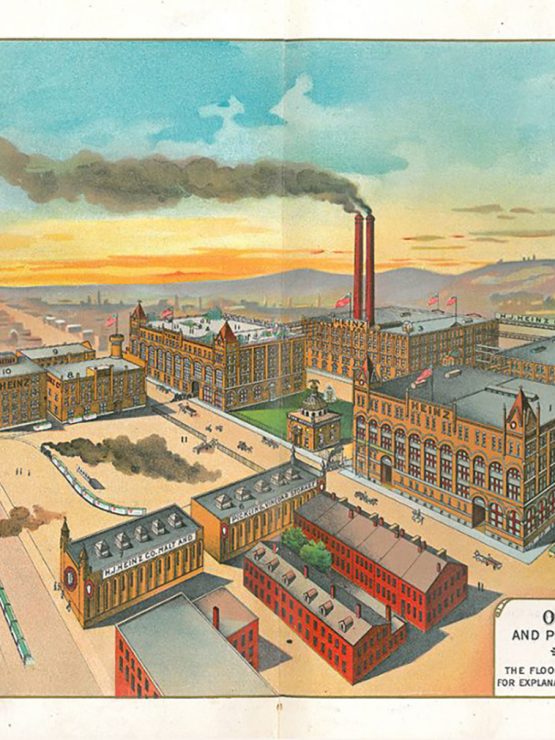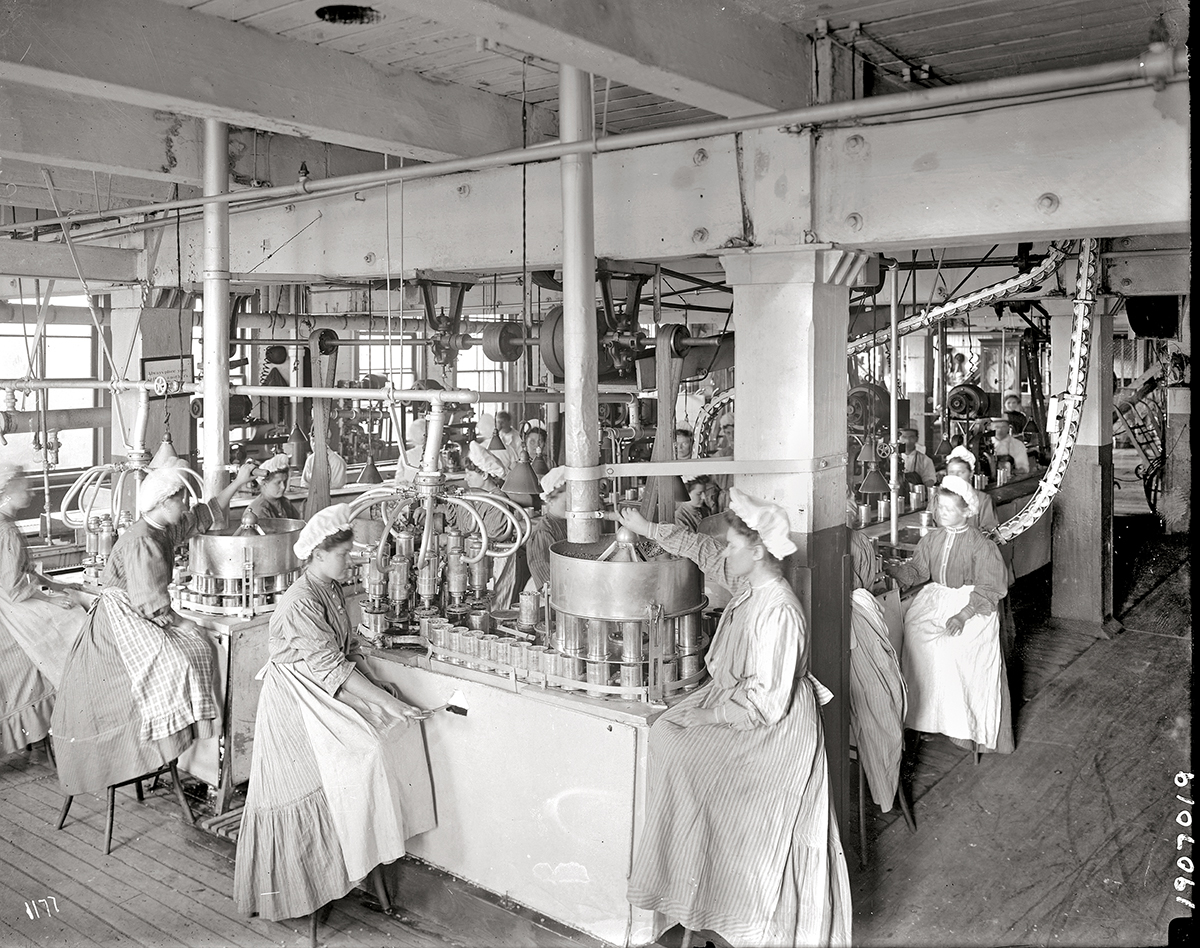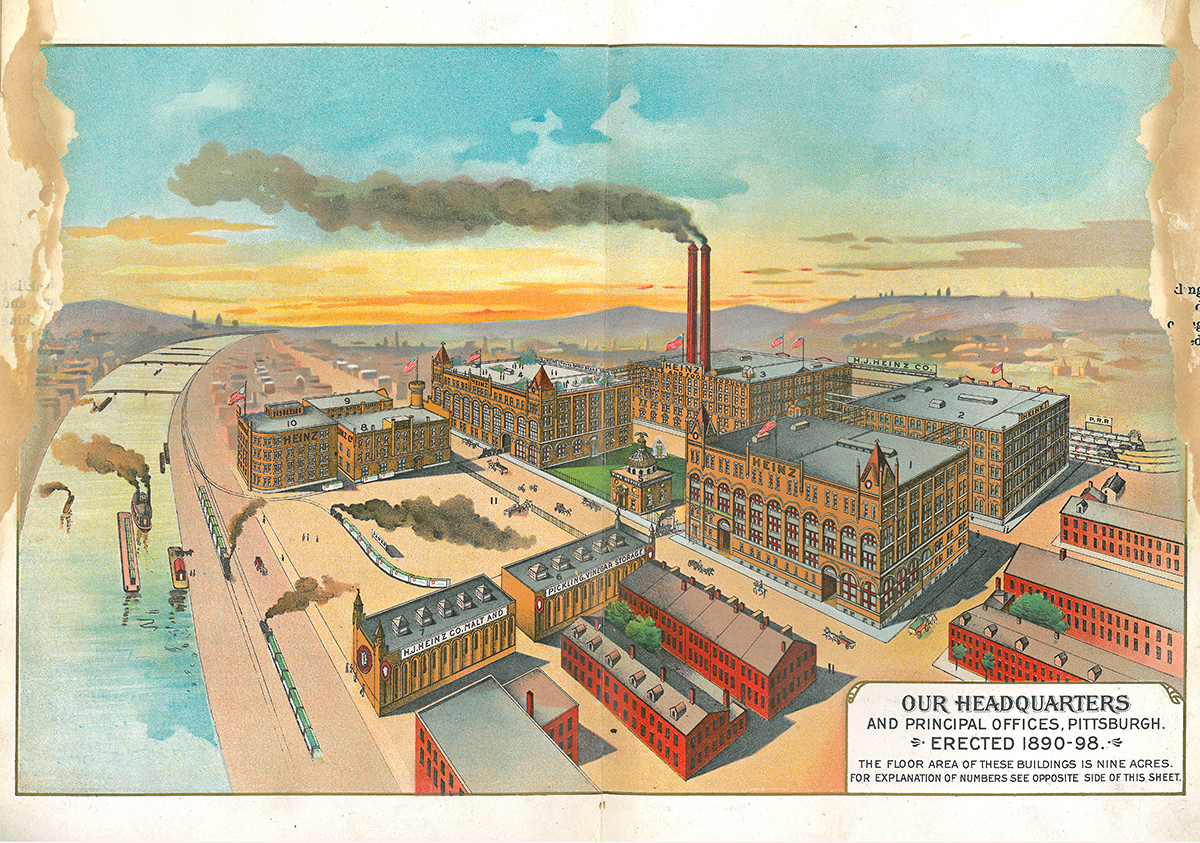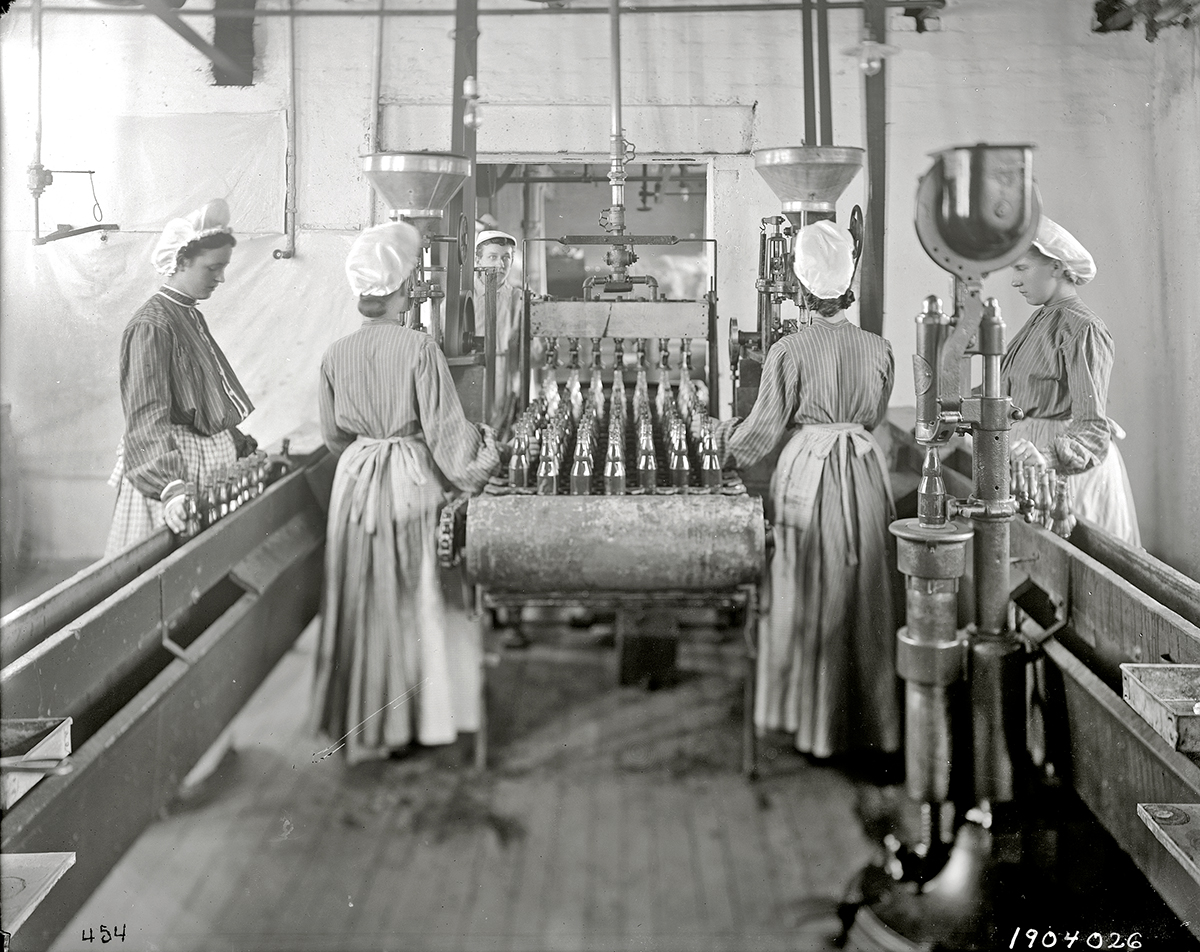The following post is an excerpt from the new book, 57 Servings From the Heinz Table, by History Center curator Emily Ruby. You can purchase the book from our museum shop or online.
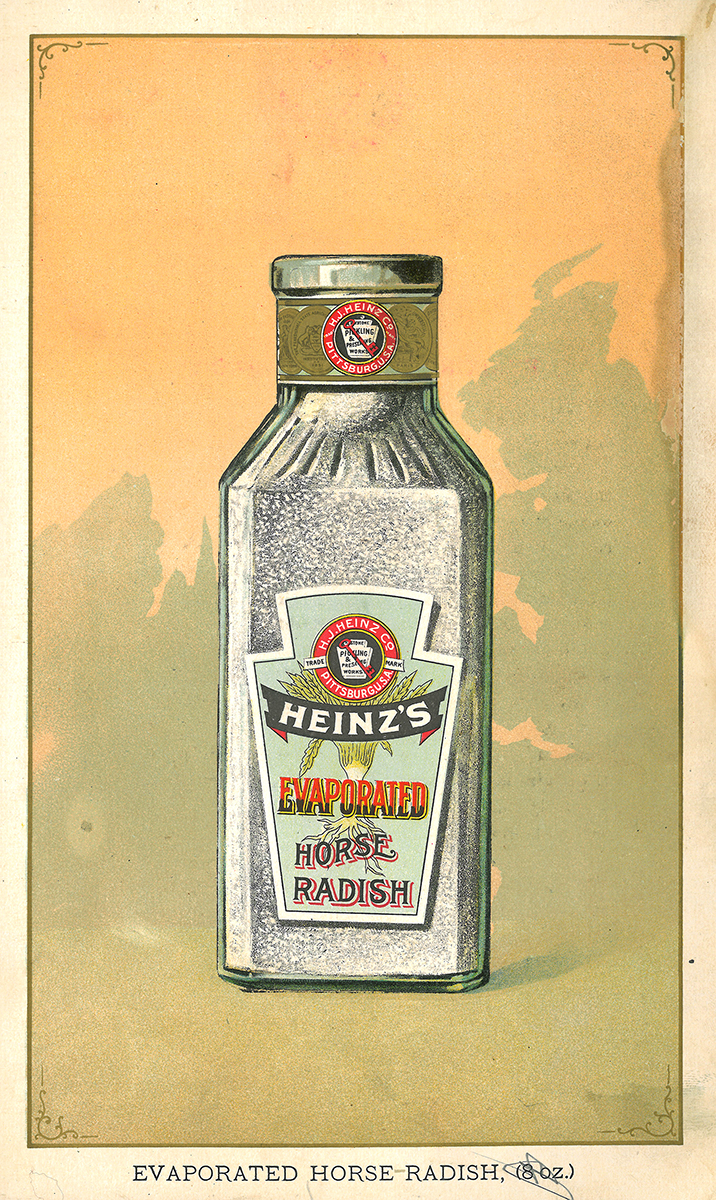
First Product
The very first Heinz product, bottled horseradish, saved homemakers from a thankless but necessary task. The preparation of horseradish as a condiment required long and tedious grating. Heinz believed, from his early experiences, that women would gladly skip the process of grating their own horseradish if they could buy a trusted, packaged product. His hunch proved correct, and the product sold well. He packaged his horseradish in aqua or clear glass so customers could plainly see the quality of the product inside.
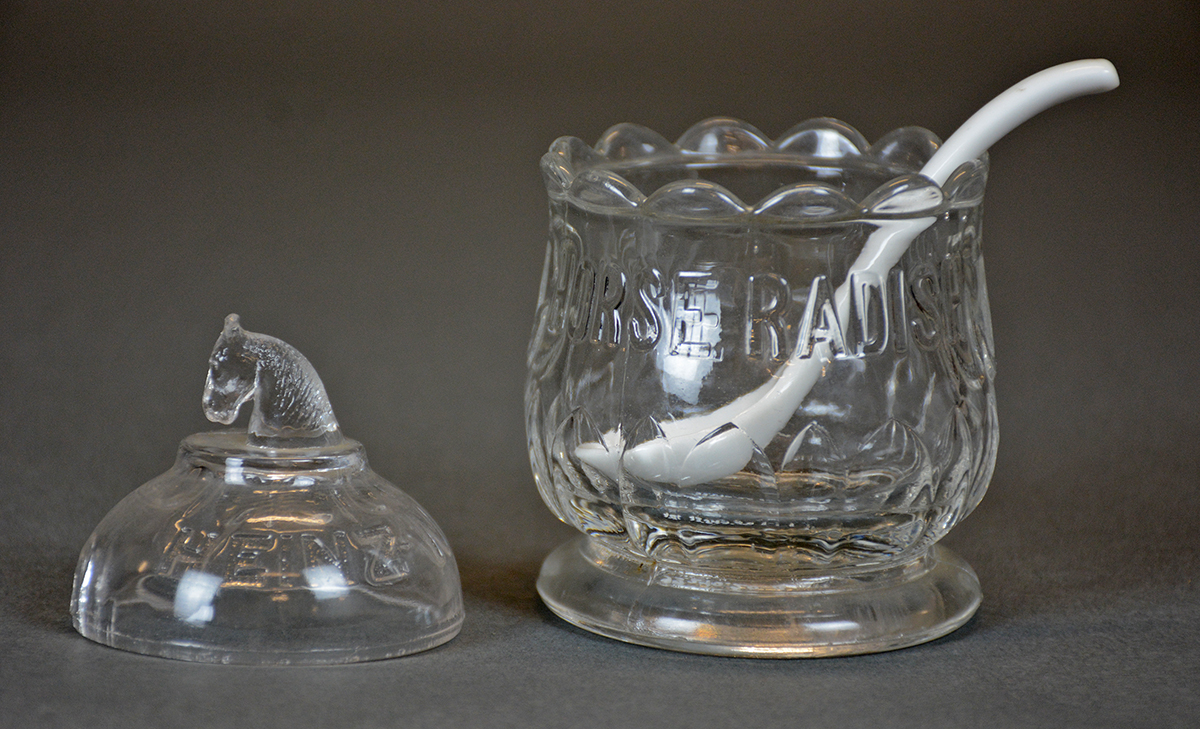
Innovative Factory
By 1898, Heinz’s factory had become the largest food processing facility in the world, built of the finest brick and beautified with stained glass windows. A marvel to visitors, the factory featured all the latest technologies, including one of the first electric ventilation systems in Pittsburgh. Designed to be completely fire resistant, an electric fireproofing system closed doors and sounded fire alarms. Heinz adopted a continuous flow system and assembly line techniques years before industrialists such as Henry Ford created a revolutionary blend of human labor and automation. Many of the first visitors to the site were engineers who traveled from around the world to see Heinz’s plant.
Emily Ruby is a curator at the Heinz History Center, where she oversaw research and interpretation for the new Heinz exhibit. She is the author of the new book, 57 Servings From the Heinz Table, available now.

